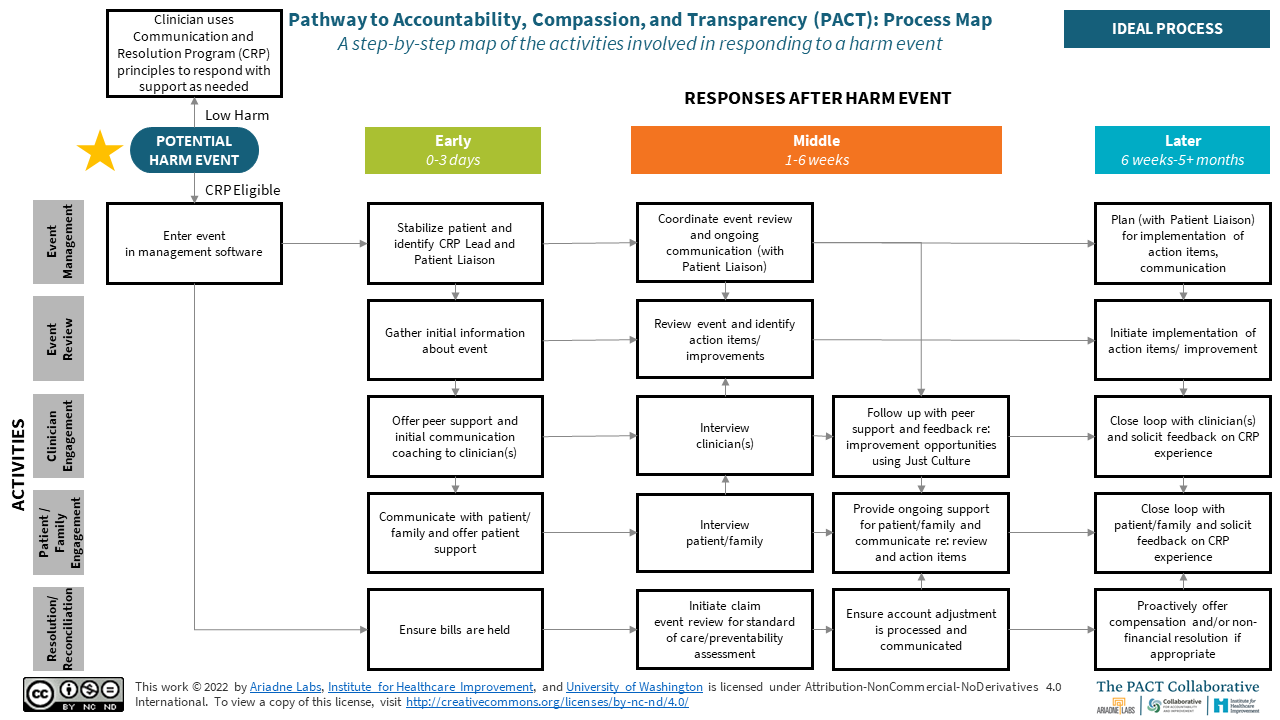Communication and Resolution Programs (CRPs) are the emerging best practice for addressing patient harm when it happens and preventing it in the future. At the highest level, CRPs provide a systematic approach for openly engaging with patients and moving toward a positive resolution after an adverse event. They increase transparency, allow the care team to express sympathy and regret, and promote fair and reasonable compensation. CRPs contribute to patient safety by ensuring that what’s learned after an adverse event is put into practice. CRPs are characterized by:
- Transparent and prompt communication
- Support for involved patients, families, and care providers
- Rapid investigation and closure of gaps that contributed to the adverse event
- Proactive resolution
- Collaboration across all involved stakeholders
What are the goals of Communication & Resolution Programs?
CRPs are based on the recognition that most adverse events are not caused by incompetent providers, but rather by the interaction between competent clinicians and faulty healthcare systems, processes, or conditions. The main goals of CRPs are to:
- Ensure the needs of the patients and families harmed by healthcare are met
- Promote learning within and across healthcare providers and institutions to prevent recurrences
Patient Harm
Patient harm that may qualify as a CRP eligible event may be of various severities including:
- Unsafe condition – potential event: any circumstance that increases the probability of an adverse event.
- Near miss: event occurred but did not reach the patient.
- No harm: event reached the patient, but no harm was evident.
- Emotional distress or inconvenience: mild and transient anxiety or pain or physical discomfort, but without the need for additional treatment other than monitoring. Distress/inconvenience since discovery, and/or expected in the future as a direct result of the event.
- Temporary harm: bodily or psychological injury, but likely not permanent.
- Permanent harm: lifelong bodily or psychological injury or increased susceptibility to disease.
- Severe permanent harm: severe lifelong bodily or psychological injury or disfigurement that interferes significantly with the functional ability or quality of life.
- Death: Dead at the time of the assessment.
Eligibility for CRP
A CRP eligible event includes adverse patient harm events of various severities (from temporary non-permanent harm to severe permanent harm/death) in which an error occurs during the care received. The adverse event would not be eligible for CRP if evidence suggests that the provider(s) involved in the event pose a significant risk of harm to patients through gross incompetence, recklessness, licensee impairment and/or intentional misconduct.
The CRP Process
The below CRP Process Map was created by Ariadne Labs, Institute for Healthcare Improvement, and University of Washington for the Pathway to Accountability, Compassion, and Transparency (PACT) Collaborative, a learning community for healthcare organizations interested in implementing CRP. The process map displays the ideal timespan of CRP activities and can serve as a guide to fulfilling all essential elements of CRP.


